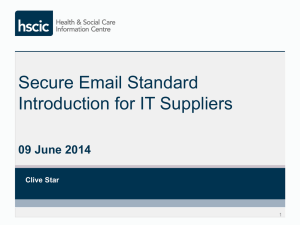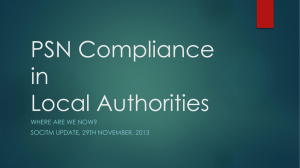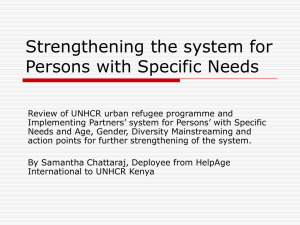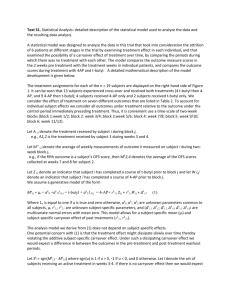MPLS-TP PWE3 dual-homed protection (MPDP)
advertisement
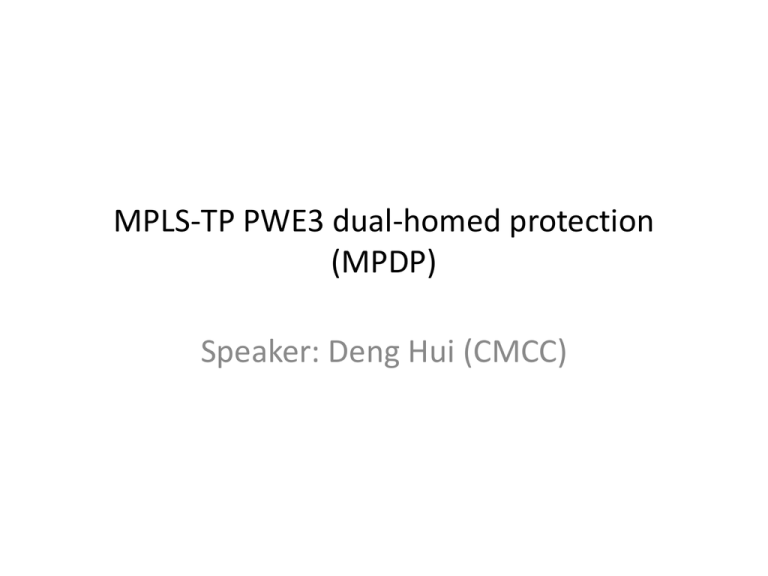
MPLS-TP PWE3 dual-homed protection (MPDP) Speaker: Deng Hui (CMCC) limitation of Linear Protection mechanism ① CE PE PSN ② PE ③ CE • The linear protection mechanisms work within the PSN and provide fast recovery when link failure or P node failure occurs. However, Linear protection unable to protect against the failure of a PE node or the failure of an attachment circuit. For example: • Failure point ① can recovery by linear protection. • Failure ② and ③ can’t recovery by linear protecgion. Requirements of dual-homed network topology ① CE PE ② PE1 PSN ③ CE PE2 • MPLS-TP network is often constructed by dual-homed topology to improve network survivability. • The operators need an end-to-end network’s survivability for guaranteed services, so the protection mechanisms for AC failure(③),PE failure(②) and failure within PSN(①) are all needed. Limitation of PW redundancy ① PE CE ② PE1 ③ PSN CE PE2 • • • • PW redundancy mechanism has introduced in RFC6718 to meet the requirment of dual-homed network topology. It provided a separate mechanisms to recover the PE and AC link failure from the PSN failure. Failure ② ③: using PW redundancy mechanism. Failure ①: using PSN protection mechanism(such as FRR, PSC, APS). This separate mechanism raised the following issues: longer recovery time, because hold-off time should be set to avoid race scenarios. lower bandwidth efficiency because of multi-layer protections. extra configuration makes the operation and maintenance more complicated. the AC link failure will result in protection switching performed within PSN. Multi-chassis PW protection mechanism PE-1 CE PE-3 CE PE-2 PW protection(APS/PSC) • • • • MC-PW protection DNI PW PW protection in PE-3: Dual-homed PW protection mechanism keeps the same protection switching mechanism with linear protection in the Remote PE (PE-3). MC-PW protection mechanism between PE-1 and PE-2: ① Dual nodes interconnection (DNI) PW is set up between two dual-homed PE nodes, and it is used to bridge traffic when failure occurs. ② Messages between two dual-homed nodes including “channel status notify message” and “protection group status notify message” are used to coordinate the multi-chassis PW protection. Multi-chassis LAG protection mechanism PE-1 port CE PE-3 DRCP port Ethernet DRNI port LAG CE port Ethernet PE-2 • • DRNI is used to protect Ethernet link failure between CE and PE and dual-homed node Failure on the CE side in dual-homed protection mechanism. DRNI (Distributed Resilient Network Interconnect) and DRCP (Distributed Relay Control Protocol) is defined in IEEE P802.1AXREV-D2.2. DRNI expands the concept of Link Aggregation so that, at either one or both ends of a Link Aggregation Group, the single Aggregation System is replaced by a Portal, composed from one to three Portal Systems. Cooperation of MC PW protection and DRNI PW1 Service PW PW1 Cooperation state machine PE3 PW2 Service PW PE1 AC CE DNI-PW PW2 AC PE2 • • • In dual-homed PE nodes, the protection mechanism in PSN network(MC PW protection) and protection mechanism between PE and CE(DRNI) should cooperate to ensure an appropriate switch. ①Service PW Status: Service PW is the PW which carry service between dual-homed PEs and remote PE and Service PW status is decided by MC PW protection mechanism. ② AC status is the status of AC port between dual-homed PW and CE, being either active or standby. It is decided by DRNI mechanism. Cooperation state machine in dual-homed nodes The principle of three point state machine in dual-homed nodes: • If AC status is active, establish connection from service PW to AC. If AC status is standby, establish connection from service PW to DNI PW. • If service PW is active, establish connection from AC to service PW. If service PW status is standby, establish connection from AC to DNI PW. • If service PW is active, establish connection from DNI PW to service PW. If service PW status is standby, establish connection from DNI PW to AC. State transition of three point state machine in dual-homed nodes: PW FWD DNI FWD AC FWD To AC To PW To PW To DNI To PW To PW To AC To AC To DNI To DNI To AC To DNI



